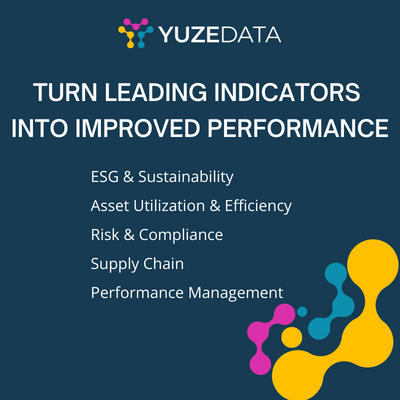Today’s business execution and differentiation depend on how strategically companies deploy and utilize their operational assets.
Industrial enterprises have invested heavily in digitization. And as a result, they can leverage vital data from their assets: machine data from IoT sensors and monitors, workflow data in digitized applications, and engineering data from the machines themselves.
But many have hit a roadblock. Their different data sources rarely talk or integrate with each other to result in improved business performance. The last mile of digital transformation is matching the asset data with other business data to create new, innovative, performance-driven use cases that impact the entire business, not just the operational assets. Without this last mile, much of the opportunity for return on investment from digital transformation is not realized.
Developing Asset-Driven Performance Improvement Models
At YuzeData, we are working with operations and safety experts across asset-intensive industries to simulate how they can use their asset and other data sources to drive efficiency and safety improvements. Our platform provides a simple shortcut to the leading indicator data. We then enrich it with SME knowledge that gives the data value and context and create specific performance-driven use cases that automate smart actions that improve both safety and productivity. Some recent YuzeData examples include:

- Define unsafe conditions; monitoring these against permissible thresholds; alerting workforce and safety leaders if tolerance is breached
- Monitor critical task registers; correlate these against mandatory scheduling; automate intervention if compliance is not met
- Identify critical equipment; analyze related critical maintenance; automate risk flag if essential maintenance is overdue to prevent downtime
- Monitor planned work volumes; correlate against competence levels of available workforce; automate risk alert if there is a delta
- Automate the collection of emissions data; transforming to required output; correlate against forecast levels to meet Sustainability Strategy targets; raise alerts in energy spikes that deviate to plan
These expert-driven models are not only applicable for one specific asset at one specific location. They create new standards that can easily be shared across the organization, supply chain and entire ecosystem. And that’s where true performance improvement starts.






